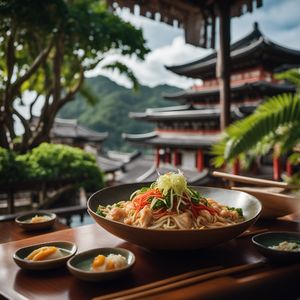
Dish
Nattō
Nattō is a unique and flavorful dish that is made by fermenting soybeans with a specific strain of bacteria. The fermentation process gives the soybeans a sticky and slimy texture and a strong, pungent flavor. Nattō is a popular breakfast food in Japan and is often served with rice and other toppings. It is also a great source of protein and other nutrients.
Origins and history
Nattō has been a part of Japanese cuisine for centuries. It is believed to have originated in the eastern regions of Japan where the climate is ideal for fermenting soybeans. Today, Nattō is still a popular dish in Japan and is enjoyed as a breakfast food or as a topping for rice dishes.
Dietary considerations
Nattō is vegan and gluten-free. It is also a good source of protein, fiber, and other nutrients. However, it has a strong and pungent flavor that may not be appealing to everyone. It is also high in vitamin K, which can interfere with blood-thinning medications.
Variations
There are many variations of Nattō depending on the toppings and seasonings used. Some popular toppings include green onions, soy sauce, and mustard. Some recipes also call for the addition of raw egg or grated daikon for extra flavor.
Presentation and garnishing
Nattō is typically served in a small bowl or dish. It can be garnished with toppings such as green onions or sesame seeds for added flavor and presentation.
Tips & Tricks
To make Nattō, use high-quality soybeans and a specific strain of bacteria called Bacillus subtilis. The fermentation process can take up to 24 hours and requires a warm and humid environment. Store Nattō in the refrigerator for up to several days.
Side-dishes
Nattō is often served as a breakfast food with rice and other toppings. It can also be used as a topping for sushi or other rice dishes.
Drink pairings
Green tea or miso soup are popular drink pairings with Nattō.
Delicious Nattō recipes
More dishes from this category... Browse all »

Acar kuning
Malaysian cuisine

Atchara
Filipino cuisine

Baechu-kimchi
Korean cuisine

Baek kimchi
Korean cuisine

Beet Eggs
Jewish cuisine

Burong mangga
Filipino cuisine

Chilera
Ecuadorian cuisine

Chinese Pickles
Chinese cuisine



